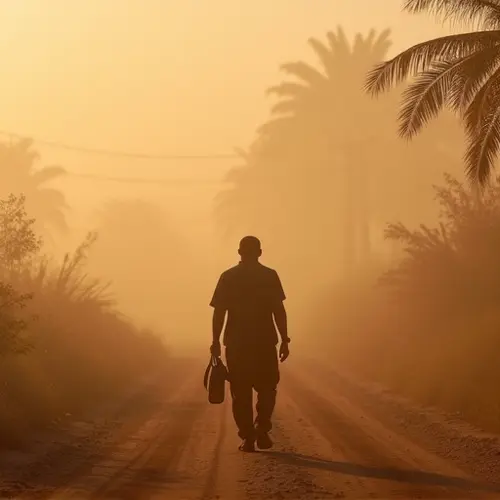
Caribbean Shrouded in Historic Dust Plume
An immense Saharan dust cloud comparable in size to the continental United States has enveloped the Caribbean basin. Spanning approximately 2000 kilometers across the Caribbean Sea, this atmospheric phenomenon extends from Jamaica in the west to Barbados in the east, and from the Turks and Caicos Islands in the north to Trinidad and Tobago in the south.
Health and Visibility Impacts
The dust concentration has significantly reduced air quality and visibility throughout the region. Local authorities report widespread physical symptoms including sneezing, coughing, and eye irritation among residents. Health officials strongly recommend wearing face masks as protection against the particulate matter. Puerto Rico's capital San Juan has issued additional heat warnings since the suspended sand particles trap ground-level warmth.
Impending US Arrival
Meteorological models indicate the dust plume will reach southern US states including Florida, Texas, Louisiana, Alabama, and Mississippi within days. Having traveled over 8000 kilometers from its Saharan origin in just over a week, the dust mass remains clearly visible on satellite imagery. The dust cloud's movement patterns follow established atmospheric circulation models that frequently transport African dust across the Atlantic during summer months.
Ecological Significance
While creating temporary inconveniences like dirty surfaces and respiratory discomfort, Saharan dust provides essential nutrients to marine and terrestrial ecosystems. The mineral-rich particles deliver vital iron and phosphorus to ocean phytoplankton and Amazonian rainforests. This atmospheric transport represents Earth's largest annual mineral dust migration, with 400-700 million tons of Saharan dust entering global circulation systems.
Visual Phenomena
Residents can expect dramatically enhanced sunrise and sunset displays as sunlight interacts with suspended dust particles. The optical scattering effect typically produces vivid orange to crimson hues during twilight hours. Similar phenomena have previously created spectacular skyscapes across Europe when Saharan dust reached the continent.

 Nederlands
Nederlands
 English
English
 Deutsch
Deutsch
 Français
Français
 Español
Español
 Português
Português